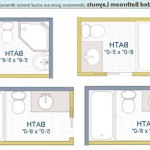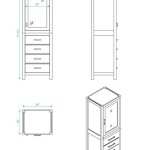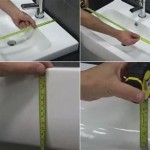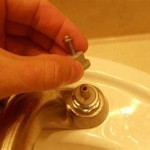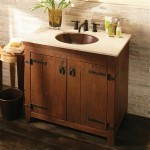Bathroom Sink Supply Line Fittings: A Comprehensive Guide
Bathroom sink supply lines are the essential components that connect your sink's faucet to the water supply system. These lines typically consist of two flexible hoses, one for hot and one for cold water. However, there are various types of fittings that play a crucial role in ensuring a secure and leak-free connection. Understanding these fittings is essential for both homeowners and plumbers to ensure proper installation and maintenance of bathroom sink supply lines.
1. Types of Bathroom Sink Supply Line Fittings
Bathroom sink supply line fittings are available in various materials and configurations. The most common types include:
a) Compression Fittings
Compression fittings are widely used for their simplicity and affordability. They consist of a nut, a ferrule (a small ring), and a threaded body. During installation, the nut is tightened, compressing the ferrule against the pipe, creating a secure seal. These fittings are typically made of brass or chrome-plated brass and are compatible with copper, PEX, and CPVC pipes.
b) Push-Fit Fittings
Push-fit fittings offer a quicker and easier installation process compared to compression fittings. These fittings feature a spring-loaded mechanism that secures the pipe by pushing it into the fitting. They are often made of PEX or CPVC and are specifically designed for use with corresponding pipe materials. Push-fit fittings are known for their convenience and reliability, making them a popular choice for modern plumbing installations.
c) Sweat Fittings
Sweat fittings require soldering to create a permanent connection. These fittings are commonly used with copper pipes and involve heating the fitting and pipe to melt solder, creating a strong bond. Sweat fittings offer excellent durability and are suitable for high-pressure water applications. However, they require specialized tools and expertise for proper installation.
d) Crimp Fittings
Crimp fittings use a tool to clamp a sleeve onto the pipe, creating a leak-proof connection. These fittings are typically used with PEX pipes and offer a reliable and secure solution. However, they require a specialized crimping tool for installation.
2. Factors to Consider When Choosing Fittings
Choosing the right fittings for bathroom sink supply lines depends on various factors, including:
a) Pipe Material
The type of pipe material used for the water supply system dictates the appropriate fitting to use. Copper pipes often require sweat or compression fittings, while PEX and CPVC pipes are compatible with push-fit, crimp, or compression fittings. It is crucial to ensure the fitting is compatible with the pipe material to ensure a secure and leak-free connection.
b) Water Pressure
The water pressure in your home will influence the type of fittings required. High-pressure systems might necessitate fittings with a higher pressure rating to handle the increased force. Consult the manufacturer's specifications for the recommended pressure ratings for the fittings you choose.
c) Aesthetics
While functionality is paramount, aesthetics also play a role in choosing fittings. Chrome-plated fittings blend seamlessly with modern bathroom fixtures, while brass fittings offer a vintage touch. Choosing fittings that complement the bathroom's style can enhance its overall aesthetic appeal.
3. Installation and Maintenance
Proper installation and maintenance are crucial for ensuring the longevity and functionality of bathroom sink supply line fittings. It is recommended to consult a qualified plumber for professional installation to ensure the fittings are securely attached and the system is leak-free. Routine inspection and maintenance are also essential to prevent leaks and ensure the fittings are in good working order. This includes checking for signs of corrosion, wear, and damage and addressing any issues promptly. In the event of a leak, it is important to shut off the water supply immediately and contact a plumber for repairs.
By understanding the different types of fittings available, their compatibility with various pipe materials, and the factors to consider when choosing them, homeowners and plumbers can ensure the safe and efficient operation of bathroom sink supply lines. Regular maintenance is essential for preventing leaks and ensuring the longevity of the fittings, safeguarding the integrity of the plumbing system and reducing the risk of water damage.

How To Tighten Water Supply Line Connectors Diy Family Handyman

What Size Are Faucet Supply Lines For All Faucets Tck

Bwe 24 In Braided Stainless Steel Supply Hose 3 8 Female Compression Thread X M10 Male Connector 2 Piece A 9h 60 The Home Depot

Need Adapter For This Bathroom Faucet Connection

Sharkbite Seal 1 2 In X 7 8 12 Push To Connect Angle Stop Toilet Connector 24656 The Home Depot

Faucet Supply Line Types And Installation Dengarden

Ez Fluid 20 X 1 2 Fip 3 8 Comp Lead Free Brass Nuts Stainless Steel Braided Water Supply Line Faucet Hose Connector Lines Bathroom Kitchen Toilet Sink 10 Com

Bwe 8 Inch Widespread Bathroom Faucet With Pop Up Drain Overflow And Supply Line Waterfall 3 Holes Two Handle Sink Faucets Lead Free Brushed Nickel Lavatory Mixer Tap Com

Replace Bathroom Sink Water Supply Lines

Braided Stainless Steel Water Flex Lines
Related Posts

